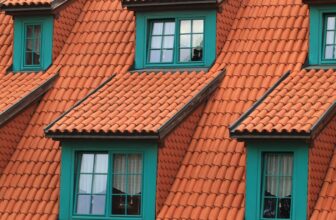
Master Your Domain: A Comprehensive Guide to Setting Up Your Smart Home
In today’s rapidly advancing technological landscape, the dream of living in a fully integrated smart home is becoming a reality for many. With a simple tap on a home control app, homeowners can now command a symphony of devices, from lights and thermostats to security systems and entertainment hubs. As empowering as it sounds, setting up such a home ecosystem can be daunting for the uninitiated. This guide, with insights from industry giants like Schneider Electric, aims to demystify the process and help you master your domain seamlessly.
Smart homes are the ideal combination of convenience and innovation. The home management software, a virtual dashboard that gives homeowners unparalleled control over their living areas, lies at the center of this fusion. Installing these apps is the first step in experiencing this new way of life. To begin, it is critical to select an app that is compatible with your device environment. Compatibility ensures that all devices may be easily linked and managed, whether you prefer Apple’s HomeKit, Google Home, or other platforms.
After selecting and installing the app, the following step is to add and configure devices. Most smart gadgets include a QR code or a setup code that, when scanned or entered by a home control software, starts the pairing process. Schneider Electric, recognized for its smart home solutions, frequently includes simple instructions and visual tips with its products to expedite this step. This ease of use ensures that even those who do not consider themselves to be technically adept can have their smart home up and running without a hitch.

Now that the devices have been paired, it’s time to delve into the world of personalization. Smart homes truly shine when they reflect their residents’ lifestyles and tastes. Homeowners may use the home control app to configure routines such as having the lights dim at a specified time, or the thermostat adjusts to a temperature when it senses you’re on your way home. Furthermore, if energy efficiency is a concern, firms such as Schneider Electric offer insights and data within their apps, assisting homeowners in monitoring and reducing their consumption in line with a more sustainable living strategy.
Security is critical in many aspects of technology. A connected home is a two-edged sword: although it offers unparalleled convenience, it may also be exposed to breaches if not properly protected. To combat potential risks, most trustworthy home control apps include robust encryption and regular software updates. Schneider Electric underlines the need for regular security audits, advising customers to make sure that all devices, not just the primary app, receive timely software and firmware updates. Such precautions go a long way toward ensuring the safety and security of one’s smart home.
The daily experiences are the climax of this journey from a traditional to a smart house. The days of physically verifying if a door was secured or the heating was switched off are long gone. Homeowners may get a bird’s eye view of their home with a few swipes and taps, making changes on the fly or depending on predefined routines to automate regular duties. Schneider Electric’s entrance into smart homes highlights the revolutionary potential of such a setup. They’ve demonstrated through ongoing innovation that smart homes are more than simply flashy gadgets; they represent a holistic transition toward more intuitive, efficient, and sustainable living.

The potential for smart homes rests in the complicated web of inter-device communication, which extends beyond the immediate functionality of turning gadgets on and off. A truly smart home goes beyond individual orders, becoming a system in which gadgets communicate and respond to one another. Consider a scenario in which, when rain is detected, your windows automatically close, the thermostat adjusts to maintain a comfortable temperature, and the lights brighten somewhat to compensate for the gloom outside. These multi-device actions, known as “scenes” or “automation,” improve the smart home experience by building an environment that anticipates and responds to both internal and external stimuli.
Finally, the smart home journey is ever-changing. While configuring and customizing are important first steps, the world of inter-device communication and speech interactions leads to a more connected and responsive future. Schneider Electric, like other industry leaders, is at the forefront of these advances, continually pushing the limits of what is possible. Our responsibility as homeowners is to remain curious and knowledgeable, ensuring that as technology advances, we harness it in ways that make our living environments more intuitive, inclusive, and innovative. With the correct tools and mindset, our homes will not only be smart but also reflect our changing goals and requirements.



















































































